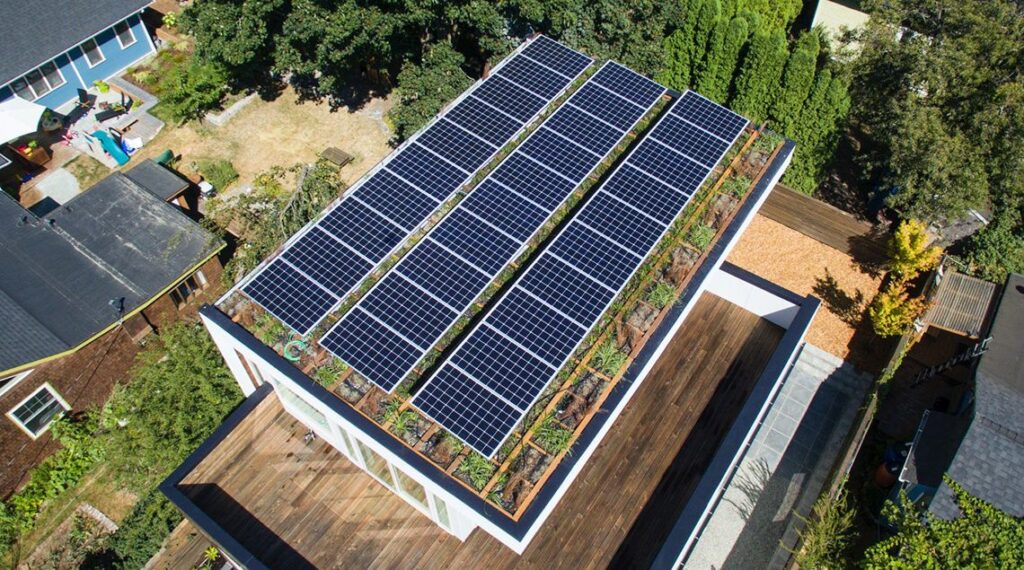Solar panels are primarily made using semiconductor materials, and the most common material for solar cells is crystalline silicon. There are two main types of crystalline silicon solar cells:
- Monocrystalline Silicon:
- Monocrystalline solar cells are made from a single crystal structure, providing a high level of efficiency. They are easily recognizable by their black or dark blue color. Monocrystalline panels tend to be more space-efficient and offer a higher power output per square foot compared to other types.
- Polycrystalline Silicon:
- Polycrystalline solar cells are made from multiple crystal structures, and they appear as a mosaic of different shades of blue. While slightly less efficient than monocrystalline panels, polycrystalline panels are cost-effective and still offer good performance. They are a popular choice for residential and commercial installations.
Both monocrystalline and polycrystalline silicon solar panels are widely used and have similar lifespans. The choice between them often depends on factors such as efficiency requirements, available space, and budget considerations.
In addition to crystalline silicon, there are other emerging technologies and materials used in solar panels, including:
- Thin-Film Solar Cells:
- Thin-film solar cells use layers of different semiconductor materials, such as amorphous silicon, cadmium telluride, or copper indium gallium selenide (CIGS). These panels are lighter, more flexible, and can be produced at lower costs than traditional crystalline silicon panels. However, they generally have lower efficiency and may degrade more quickly over time.
- Perovskite Solar Cells:
- Perovskite is a newer material gaining attention for its potential in solar cells. Perovskite solar cells offer the advantage of being inexpensive to manufacture and relatively easy to process. Research is ongoing to improve their efficiency and address stability issues for commercial applications.
- Organic Photovoltaic Cells:
- Organic solar cells use organic materials, such as polymers, as the semiconductor. They are flexible and lightweight, making them suitable for applications like flexible solar panels. However, their efficiency is currently lower compared to traditional silicon-based cells.
When choosing solar panels, consider factors such as efficiency, cost, available space, and the specific requirements of your installation. The technology and materials used in solar panels continue to evolve, with ongoing research and development aimed at improving efficiency, durability, and cost-effectiveness.


